
views
X
Expert Source
Alina Goldenberg MD, MAS, FAADBoard Certified Dermatologist
Expert Interview. 16 August 2021.
Thankfully, you don’t need to be a beauty guru to make the most of this ingredient. We’re here to walk you through a basic honey bath recipe, along with some other soothing ingredient combos, like milk and honey.
Basic Honey Bath

Stir some honey and essential oils together in a container. Ladle out 4 US tbsp (59 mL) of honey into a jar, bowl, or other container. Then, mix in 5 drops of lavender essential oil, along with 3 drops of sandalwood essential oil. Mix all of the ingredients together until they have an even consistency. Lavender oil can help with relieving stress and promoting sleep. Sandalwood oil offers anti-inflammatory and anti-microbial benefits. You could also switch lavender and sandalwood oil with other helpful essential oils, like frankincense oil (anti-inflammatory benefits), peppermint oil (anti-inflammatory and mood-lifting benefits), lemon oil (anxiety- and depression-reducing benefits), and others. Essential oils are super concentrated, so be sure not to add any extra drops to your bath! To be safe, always do a patch test with diluted oil on a small section of your skin before adding any essential oils to your bathwater.
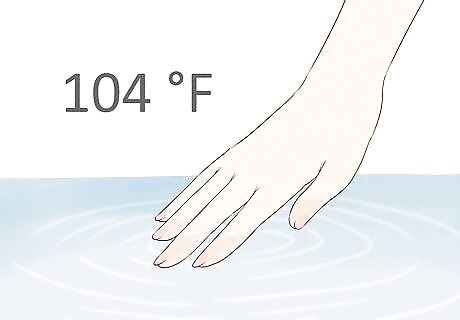
Set your bathwater to a warm temperature. Turn on your bath faucet and get a feel for how hot or cold the water is. Try adjusting the temperature to around 104 °F (40 °C), so the water is nice and warm when you’re ready to soak. If you’re a big fan of hot baths and showers, cap the water temperature off at 112 °F (44 °C). Unfortunately, hot water tends the strip the natural oils out of your skin, leaving it dry.

Fill your bathtub about halfway with water. While there’s no right or wrong way to fill up your bathtub, cutting yourself off at the halfway mark is a good idea if you’re hoping to save some water. Ideally, fill the tub high enough so the water reaches your navel when you’re lying down. It’s fine if you prefer baths with a little more water. Just be sure to switch off the faucet before the water level reaches the overflow drain.
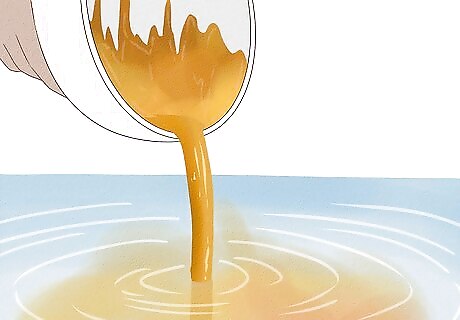
Add the honey and oil mixture to the bath as the tub fills. Stir the honey and essential oils in with the rest of the bathwater in the tub, which will help the ingredients disperse better in the water. Don’t worry—a little goes a long way! Be sure to give the honey an extra stir in the bathwater if it doesn’t seem to be dispersing.
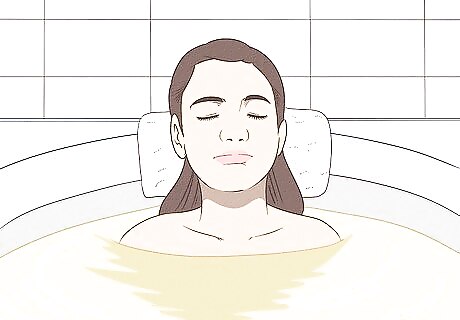
Soak for 5-10 minutes in your honey bath. Spending too much time in the bath can dry your skin out, so it’s best to cut yourself off at the 5-10 minute mark. Set a timer on your phone if you’re worried about spending too much time in the bath. Feel free to rinse yourself in the shower after your bath.
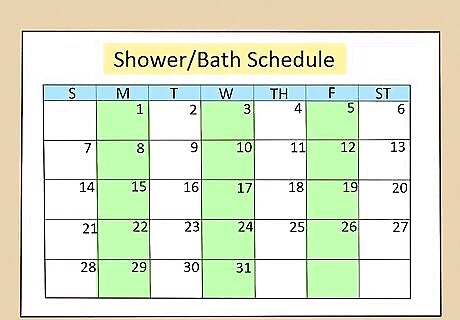
Limit yourself to 2-3 baths a week. The medical community doesn’t recommend an exact number of baths and showers per week. However, medical experts do agree that taking a bath every day isn’t good for your skin. To be safe, cap yourself off at 3 baths each week. This 2-3 quota includes showers, too. Make sure to budget your showers accordingly if you plan on taking a honey bath throughout the week. If do you take regular showers throughout the week, cut yourself off at the 5-minute mark.
Other Honey Bath Combinations
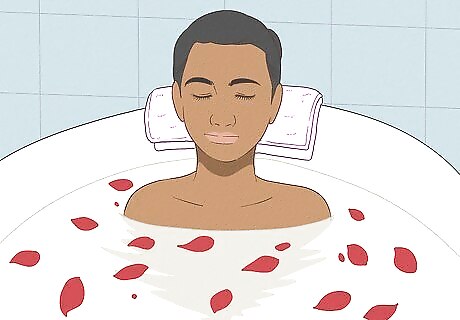
Milk and honey bath Also known as Cleopatra’s Milk Bath, bathing with milk and honey is great for your skin. Start by filling your tub up with warm water and stirring in 4 tbsp (31.2 g) of powdered milk. Then, sprinkle a handful of rose petals into the bathwater, along with 3 US tbsp (44 mL) of honey and 3 c (710 mL) of whole milk. All that’s left to do is relax and enjoy! You can buy rose petals online or from some big-box retail stores.
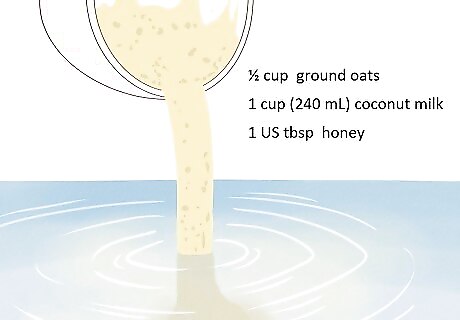
Oat, coconut milk, and honey bath Pour ½ cup (54.5 g) of ground oats into a mixing bowl, as well as 1 c (240 mL) of coconut milk and 1 US tbsp (15 mL) of honey. Stir the milk, honey, and oat mixture into a filled bathtub, and give yourself some time to soak. Honey use dates back to early civilizations due to its therapeutic potential. Its mostly antimicrobial properties have been utilized in dermatology for wound care, burn injury healing, as well as to calm inflammatory conditions. It also helps balance your skin's pH. Oatmeal is also very anti-inflammatory. Plus, the vitamin E and lauric acid in coconut milk can be very calming and moisturizing for your skin.

Red wine and honey bath Turn on the faucet to start filling your tub. Then, add 4 c (950 mL) of red wine along with 1 c (240 mL) of honey. Take a few minutes to relax in the tub, and then rinse yourself off with clean water. You don’t have to mix these ingredients together before adding them to your bathwater. Don’t worry—the red wine in the bath water won’t stain or tint your skin. This type of bath is a great option if you have dry skin.

Honey vanilla bubble bath Mix ⁄2 c (120 mL) of light almond oil, ⁄2 c (120 mL) of gentle hand or body soap, ⁄4 c (59 mL) of honey, 1 egg white, and 1 US tbsp (15 mL) of vanilla extract together in a bowl. Then, pour the mixture into your bathtub while the water runs. Keep in mind that you might need to move around a bit to get the bubbles going. Feel free to make a bigger batch of this recipe to make for later! You can refrigerate it for 3 days or less.















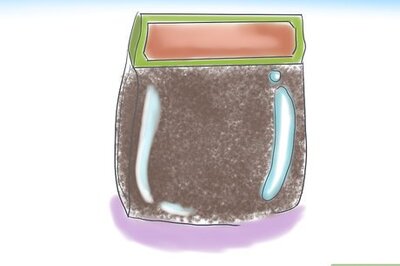



Comments
0 comment